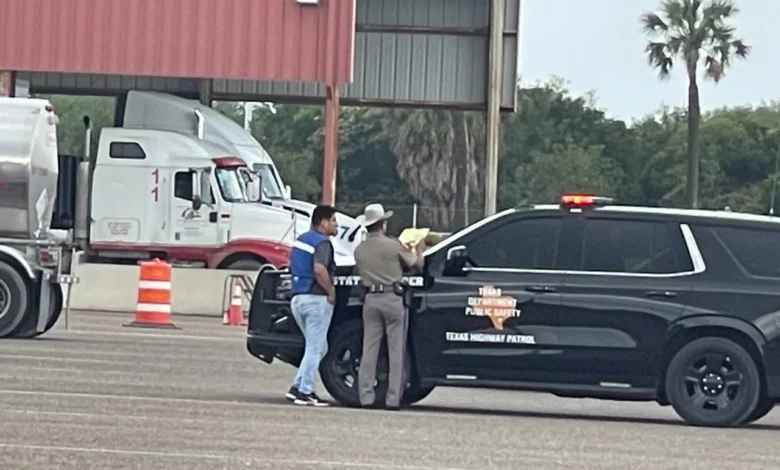How Trucking Safety Regulations Vary Across States with a Spotlight on Texas

The vast expanse of the United States is crisscrossed by millions of miles of highways, making road transport, especially trucking, a vital artery of the nation’s economy. However, with great power comes great responsibility, particularly in terms of ensuring safety on these highways to prevent accidents that can have devastating consequences. This responsibility is governed by a complex web of trucking safety regulations, which, rather than being uniform, vary significantly from one state to another. This article delves into the intricate world of these regulations, with a special focus on Texas, a state that stands out due to its unique geographical and economic position.
The Foundation of Trucking Safety Regulations in the U.S.
At the federal level, the Federal Motor Carrier Safety Administration (FMCSA) sets the baseline for trucking safety regulations. These include comprehensive guidelines covering aspects such as vehicle maintenance, hours of service (HOS), and driver qualifications. The aim is to create a standard framework to protect all road users across the nation.
However, the autonomy afforded to states allows them to supplement these federal regulations with their own, tailored to meet local needs and conditions. This results in a mosaic of regulations that trucking companies and drivers must navigate as they move from state to state.
General Trucking Safety Regulations Across U.S. States
Despite the variations, there are common threads in trucking safety regulations across most states. These include:
- Vehicle Maintenance Requirements: Ensuring that trucks are in good working order is fundamental. Regular inspections and maintenance are mandated to prevent mechanical failures that could lead to accidents.
- Hours of Service (HOS) Regulations: To combat driver fatigue, HOS regulations limit the number of hours a driver can be on the road before taking a mandatory rest period. While these are federally mandated, some states have additional requirements for breaks.
- Driver Qualification Standards: These standards are designed to ensure that only qualified individuals can operate commercial trucks. They cover everything from age and health requirements to the possession of a Commercial Driver’s License (CDL).
While it’s challenging to quantify the direct impact of these regulations on trucking accidents due to the multitude of factors involved, the FMCSA reported a decrease in large truck and bus fatalities from 5,006 in 2018 to 4,889 in 2019, suggesting a positive trend.
Unique Aspects of Texas Trucking Regulations
Texas, as the largest state in the continental U.S. and a hub for interstate commerce, has trucking regulations that reflect its unique position. Some of the Texas-specific regulations include:
- Weight and Size Limits: Texas allows for higher weight and size limits on state roads compared to federal limits, accommodating the state’s significant agricultural and industrial freight needs.
- Texas Department of Transportation (TxDOT) Regulations: TxDOT imposes additional safety and operational standards, including specific signage on trucks and trailers and requirements for transporting hazardous materials.
Understanding these regulations is crucial for anyone involved in the trucking industry in Texas. For individuals who have been involved in a trucking accident in the state, knowledge of these specific regulations is also vital. A Truck accident lawyer Texas can provide invaluable assistance in navigating the legal complexities that may arise from such incidents.
Comparing Texas Regulations to Other States
When juxtaposed with other states, Texas’ trucking regulations underscore the diversity of state approaches to trucking safety. For instance, California, known for its stringent environmental laws, imposes strict emission standards and truck idling laws that are among the toughest in the country. These regulations aim to reduce pollution and promote cleaner air but also increase operational costs for trucking companies.
On the other end of the spectrum, New York’s urban restrictions, particularly in New York City, focus on mitigating congestion and enhancing pedestrian safety. These include limitations on the size and weight of trucks allowed on certain roads and during specific times, drastically differing from Texas’ more lenient size and weight regulations.
This variance not only affects how trucking companies operate across states but also highlights the challenges in ensuring consistent safety standards nationwide.
Challenges and Controversies in State-Specific Regulations
The patchwork of state-specific trucking regulations presents significant challenges for interstate trucking companies. Navigating these differing regulations requires comprehensive knowledge and often leads to increased administrative overhead. Furthermore, the debate between federal versus state control of trucking regulations remains contentious. Proponents of state-specific regulations argue for the need to address local concerns effectively, while advocates for federal oversight cite the benefits of uniformity for safety and efficiency.
The Impact of Regulations on Trucking Safety and Efficiency
Despite the complexities, the primary goal of trucking regulations remains the enhancement of road safety. According to the National Highway Traffic Safety Administration (NHTSA), the implementation of electronic logging devices (ELDs), a federal requirement aimed at enforcing HOS regulations more strictly, was associated with a significant reduction in the number of accidents involving large trucks.
However, the balance between safety and operational efficiency is delicate. Overly stringent regulations can hamper the efficiency of freight operations, leading to increased costs for trucking companies and, ultimately, consumers. Therefore, it’s crucial for regulations to be evidence-based, ensuring they effectively enhance safety without unnecessarily burdening the trucking industry.
Future Trends in Trucking Safety Regulations
Looking ahead, technology is set to play a pivotal role in shaping trucking safety regulations. The advent of autonomous trucks, for instance, promises to revolutionize the industry by potentially reducing human error, a leading cause of accidents. However, this also raises new regulatory challenges concerning software standards, cybersecurity, and liability in the event of an accident.
Moreover, there’s a growing push for more uniform regulations across states to simplify compliance and enhance safety outcomes. This includes efforts to harmonize weight and size limits, HOS regulations, and driver qualification standards, aiming for a more cohesive national framework.
Conclusion
The landscape of trucking safety regulations in the U.S. is as diverse as the country itself, with each state tailoring its rules to local needs and conditions. Texas, with its unique blend of regulations, serves as a prime example of how state-specific approaches can differ significantly. For trucking companies, drivers, and policymakers alike, understanding these differences is key to navigating the complex regulatory environment. As the industry continues to evolve, especially with technological advancements, the quest for the optimal balance between safety and efficiency will remain at the forefront of regulatory discussions.
In the end, the goal is clear: to ensure the safety of all road users while maintaining the vital flow of goods that keeps the economy moving. Whether through state-specific regulations or a more unified national approach, the journey towards safer roads continues, with each regulation serving as a stepping stone towards this shared objective.



